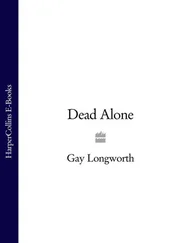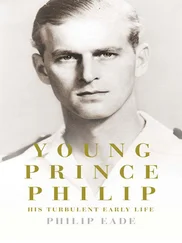In Berlin the East German authorities had felt constrained to counter the steady flight of population — including an ever increasing proportion of young, technically trained people — to the West. In 1961, in desperation, they had erected a wall between the eastern and western sectors of the city. This action reflected badly on the Soviet Bloc’s image, but the West felt unable to contest it. In the following year Kennedy did contest the movement of Soviet missiles to Cuba, however, and Khrushchev responded by withdrawing them — though not before eliciting an undertaking from Kennedy to remove US missiles from Turkey, which were as uncomfortably close to the Soviet heartlands as Soviet missile sites in Cuba were to the United States. The Cuban missile crisis removed that problem, but the Soviet Union had suffered an unnecessary public humiliation and Khrushchev was soon sacked for ‘adventurism’.
The fact that German forces had come so close to penetrating the Caucasus in 1942–3 had prompted Moscow to order the immediate deportation of over 3 million native people — including Crimean Tatars, Volga Germans and nearly half a million Chechens and Ingush 17 — to less hospitable regions far behind the lines. Their status as suspected traitors led to gratuitous ill-treatment, and barely half the number that were moved out were ever to return. After Stalin’s death, however, the repressive line towards the nationalities eased somewhat. A degree of decentralization was introduced, more Party members belonging to minorities were promoted to posts in central government, and tolerant policies on language and culture were reintroduced. Nevertheless, it was recognized that the ‘national question’ would not disappear as quickly as Marxist theory had suggested and so, while the Chechens, Ingush and Kalmyks deported in 1943 were allowed to return to their former homes with an apology from Khrushchev himself for the ‘abuses’ they had undergone, Volga Germans, Crimean Tatars and Meskhetian Turks remained unrehabilitated, in exile.
Soviet attempts to manage a multinational, multi-ethnic empire recalled tsarist preoccupations, and the policies followed embraced both old and new methods. The Baltic republics were favoured, as in tsarist times, as a testing ground for innovation, which helped to soothe feelings hurt by their loss of independence in 1939 and their reabsorption into the Soviet Union at the end of the war. However, Central Asia, despite considerable investments to establish cotton-growing, remained backward economically and its peoples largely unacculturated. On the other hand, economic and social development, as well as Soviet policies of positive discrimination, led to previously neglected minorities, including Kazakhs, Buriats, Kabar-dinians and Yakuts, overtaking ethnic Russians in the proportion of their population receiving a higher education.
Some issues, it turned out, were beyond the power of both theory and governmental action to control. There were some unexpected outcomes from deliberate changes, and secular developments were creating changes of their own. Members of minorities, no longer educationally disadvantaged, began to expect more in terms of privilege and status, and became impatient if opportunities were slow to open up to them. 18From the 1960s the proportion of ethnic Russians in the total Soviet population began to decline rapidly from its high point of almost 55 per cent, and living standards showed less improvement in Russia than among other ethnicities in the periphery. 19
Khrushchev’s boast that the Soviet Union would catch up and even surpass the United States was not to be justified. Yet in the forty years that had passed since the inception of the first Five Year Plan in 1928 immense strides had been taken economically. Gross national product had expanded seven or even eight times over. This represented an average growth rate of 6 to 7 per cent a year — better than that attained during the second period of industrialization under Stolypin. Fixed investment had grown thirty times over, and as much as 30 per cent of the economy was being reinvested in the early 1960s, although productivity was less impressive. 20
Agricultural production increased too, though hardly enough to justify the huge investments that had been poured into it. The acreage under the plough in Kazakhstan more than tripled between 1953 and 1958 yet yields fluctuated wildly year by year. The dairy industry and sheep-rearing there also saw impressive expansion; and the Kazakh economy as a whole, primitive at the outset, came to be well integrated into the Soviet Union’s. 21The output of consumer goods also grew encouragingly, but their quality was poor; and, although the cities saw the erection of vast housing estates, the housing was cramped and shoddy by Western standards. Shostakovich’s hilarious musical Cheriomushki, named after a real Moscow surburban tower-block development, is a monument both to the popular hopes invested in such projects and to the inefficiencies and corruption involved in them. It was taken off after one brief season, and not repeated.
Nevertheless, by the 1970s the population of the Soviet Union was better fed, better housed and enjoyed a higher real standard of living than it had ever done. Contentment spread, especially among the generations old enough to have experienced the privations of the Stalin period, and it extended to the nationalities. At the same time, Communism had wrought great changes in the ethnic map since tsarist days. This was partly a consequence of industrialization and urbanization. In Siberia some of the smaller ethnic groups, like the Khanty (Ostiaks) and Mansi (Voguls), had become outnumbered in their own lands by as much as five to one as ethnic Russians and others poured in to work on various projects. 22The ethnic and linguistic configuration of many parts of the Soviet Union was altered, sometimes significantly. So it was that Russians came to form almost three-quarters of the population of Karelia, 61 per cent of Buriatia’s and around half of the populations of Yakutia and Tatary
This was the result of migrations, both forced and spontaneous. Aside from the deportations, the government directed labour through job postings and used incentives to tempt workers to places where they were needed. In particular, ethnic Russians, Ukrainians and Belorussians were encouraged to settle in sensitive strategic areas where the authorities wanted to dilute strong ethnic concentrations of native peoples. In Chechnya-Ingushetia almost a quarter of the population came to be Russian, in Circassia 40 per cent; and substantial Russian-speaking populations were also planted in the Baltic republics and in the frontier areas of Transcaucasia and southern Kazakhstan. 23Population growth in Russia proper slowed considerably So did that of ethnic Russians. These phenomena may have been related to settlement policies, but they were irrelevant to the policy-makers. They hoped that the population as a whole, but particularly its elites, would develop a distinctive Soviet character, reflecting similar educational standards, sharing the same values, and enjoying the same privileges. A Soviet nationality composed of Party members of all ethnicities and others who took pride in Soviet achievements was indeed being formed, and it suggested a better fate for the Soviet Empire than that of its tsarist predecessor. Yet after a time nationalist sentiments began to grow despite these policies.
The Crimean Tatars, frustrated at their failure to recover the land of their birth, began to organize and eventually delivered a petition signed by most of them. It was rejected, but this did not end their efforts. Jews were also energized, but by Israel, which had developed into a far more attractive ‘national home’ than Birobijan, which Stalin had allotted for the purpose. Thanks to American representations, some 200,000 Jews were allowed to leave for Israel by 1981 24 — a fact which encouraged more Jews and half-Jews, and even non-Jews, to put in applications to migrate, and roused some interest, and resentment, among other sections of the population. The populations of the Baltic provinces were quiescent at this time, as were those of Belarus and Ukraine, though by the later 1960s the KGB had become concerned about underground activity by supporters of the Uniate Church, which had been suppressed after the Second World War but which was believed to be receiving support from Rome. The KGB infiltrated, or suborned, agents in order to monitor the situation. 25At this stage Soviet security was more concerned about religious than nationalist subversion, but, as events were in due course to demonstrate, the two were connected.
Читать дальше





![Stephan Orth - Behind Putin's Curtain - Friendships and Misadventures Inside Russia [aka Couchsurfing in Russia]](/books/415210/stephan-orth-behind-putin-s-curtain-friendships-a-thumb.webp)





